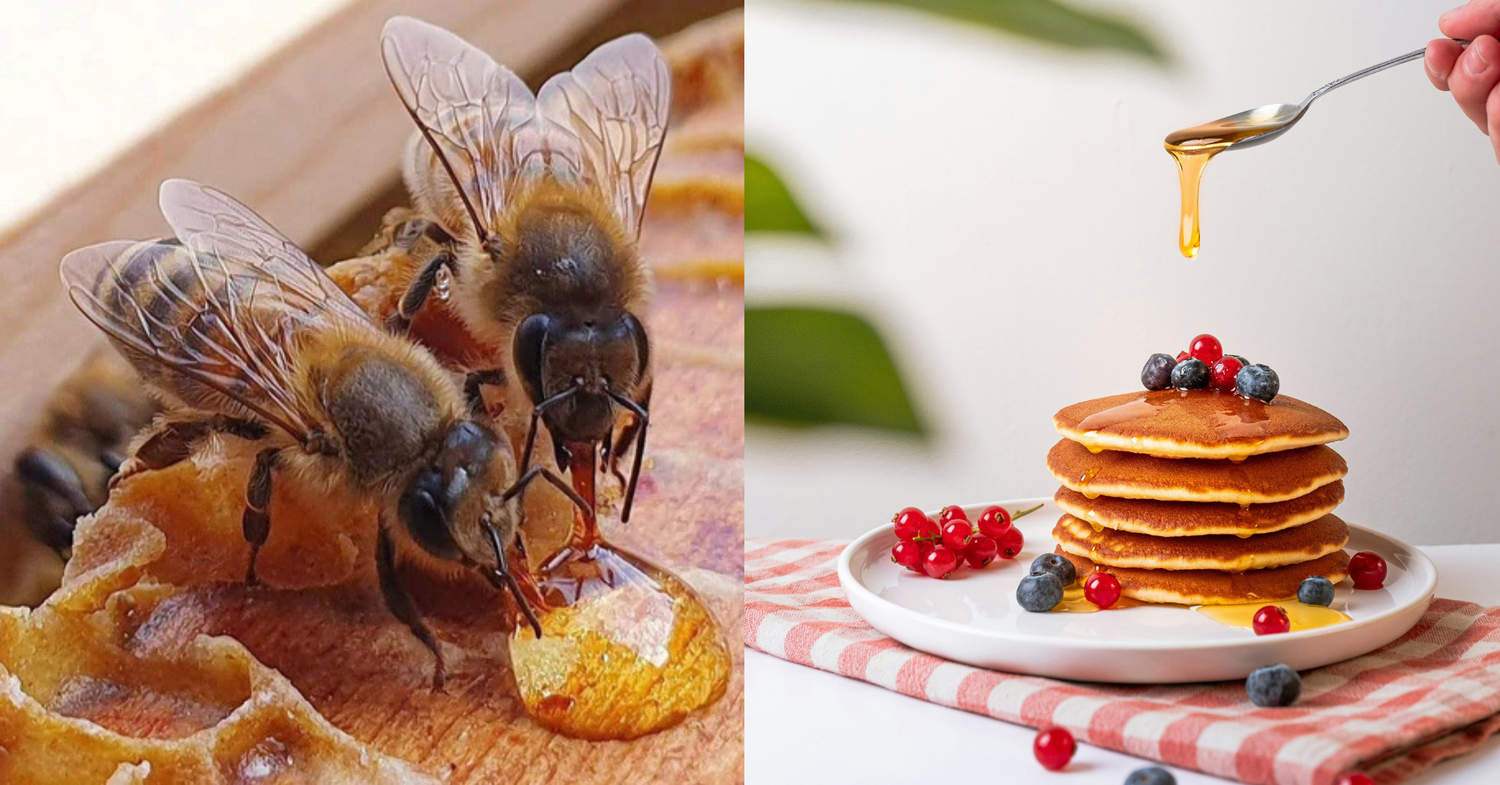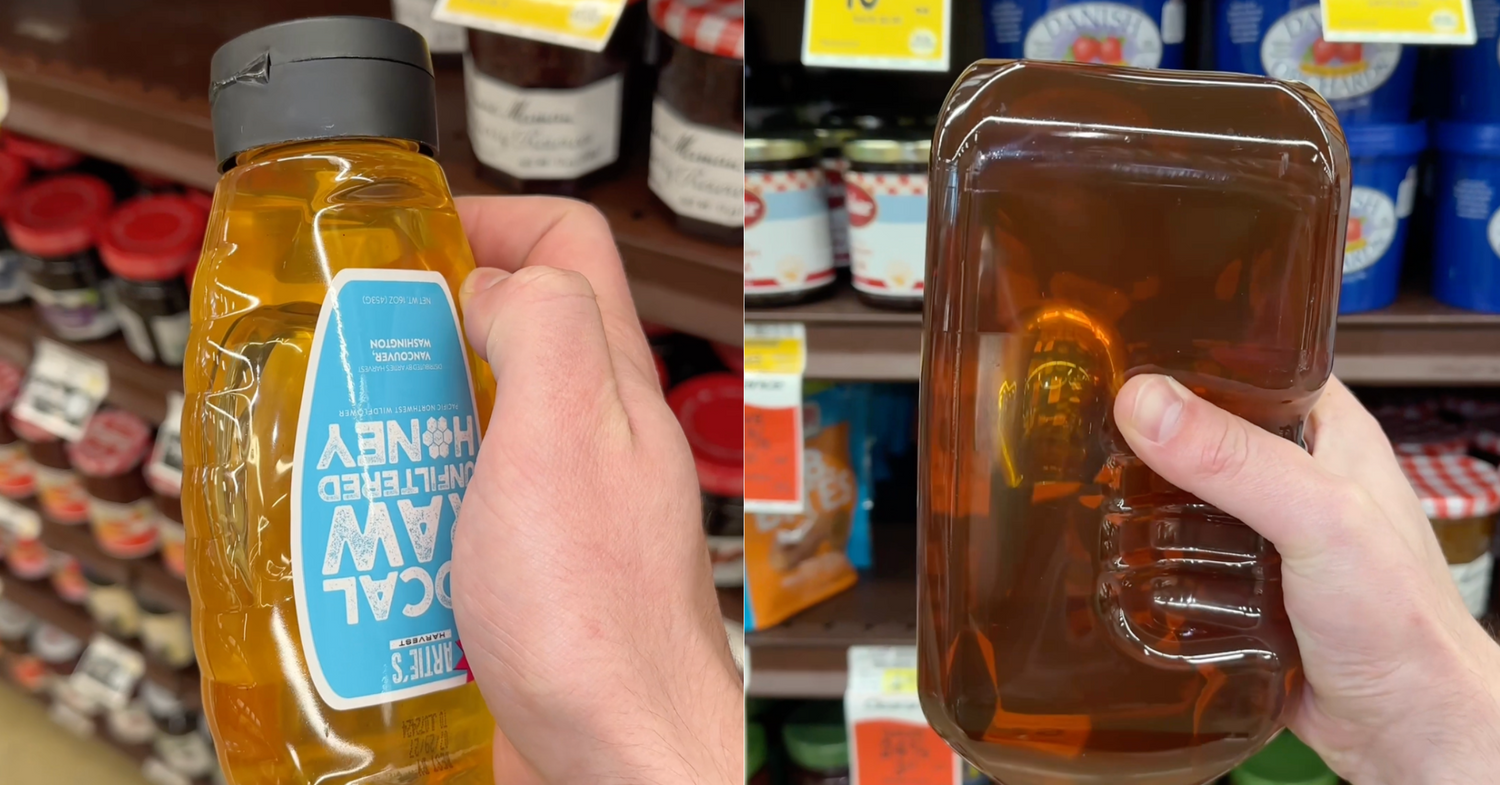My honey crystallized, good or bad?
Honey, whether crystallized or viscous fluid is made by industrious bees that extract nectar from flowers and transform it to honey by following a complex process. Have you ever noticed the granules in honey?
In some parts of the world, it is a perception that crystallized honey is a sign of contamination.
Do not throw the honey if it gets crystallized after you harvest it. The crystallization process is totally natural! Granulation could be an indication of high energy content in honey. Honey with crystals likely to contain more nutrients than liquid honey. The crystallized honey varies from liquid honey in colour, density, and texture only. There’s nothing wrong with crystallized honey nutritionally-it actually becomes opaque and more firm in consistency over time.
What is crystallized honey?
Raw honey is a super blend of natural sugars, minerals, vitamins, and enzymes. The glucose present in honey sometimes precipitates spontaneously and transforms honey to a supersaturated solution. The honey takes on a semi-solid state containing glucose crystals.
Other components of honey attached to these crystals make it a more firm suspension of nutrients.
Why does honey crystallize?
The “why” behind the crystallization of honey involves a simple process. The crystallized form of honey occurs when there is more than 70% sugar relative to the content of water (less than 20%).
Glucose due to less solubility tends to precipitate more than any other sugar and transform honey to a stable saturated state. It serves as an essential starting point for the formation of crystals in honey. The crystals appear to be fine and smooth, while large and gritty in certain cases.
Factors influencing crystallization
- Many factors are reported by beekeepers that affect the crystallization of honey. There is no specific time when honey starts crystallization. Some batches of honey never show crystallization, while others get crystallized within a few days of extraction. Honey removed readily from the comb and processed with machines is likely to form crystals faster than honey present in beehive.
- The tendency of honey to get crystallized depends mainly on glucose level and moisture content. The variety of constituents in honey, which includes different sugars other than glucose and more than 180 identified nutrients such as acids, mineral and proteins, also influences crystallization.
- Small particles–present in honey like dust, pollen, bits of wax or propolis, air can stimulate crystallization. These particles can vary on the basis of type of honey and handling techniques.
- Factors like temperature, relative humidity and type containers may also vary the tendency of honey to crystallize.
Factors for increasing crystallization
- First, the ratio of glucose to sucrose matters. The higher proportion of glucose honey contains, the more quickly it will crystalize. That ratio is entirely dependent on which flower the nectar is fetched from. More rapidly crystallized honey contains fine, smooth crystals
- Another reason honey crystallizes faster is the temperature of its creation or storage. As honey begins to cool, it becomes more solid, and the crystallization process is sped up. Bees work hard to keep the hive at perfect honey making temperatures, which is right around 95°F (35°C). Obviously, a normal consumer will keep honey at room temperature, and likely won’t make efforts to ensure that their liquid honey remains at a constant 95°F (35°C) so crystallization begins to occur.
- Amounts of pollen affect the amount that honey crystallizes. Crystals will form on any natural particles found in the honey, so the more pollen the honey contains, the higher number of potential crystals formed will be. The more natural and under-processed the honey is, the higher chance for crystallization.
How is creamed honey made using crystallization?
Crystallization can be deliberately induced, and with control, can be used to create a product known as creamed honey. This is also known as creamed honey, spun honey, whipped honey, churned honey, or honey fondant. Spontaneous crystallization results in a coarse and grainy product. Controlled crystallization results in a product with a smooth, spreadable consistency.
In controlled crystallization, we produce fine crystals, many solid stimulants must be present in the honey.
The Dyce process is often used to make creamed honey that works on the principle of controlled crystallization. The method involves adding starter crystals to honey after it has been heated twice [to 120 °F (49 °C) and 150 °F (66 °C)] and then strained. Chilled, dried, and finely ground honey–serving as the starter seed–is mixed into the cooling, liquid honey. The product is firm in three days, and in six days it has a creamy, spreadable consistency.
Can crystallization be avoided?
- Spontaneous crystallization is controlled primarily through proper storage, heating and/or filtering. Whether your honey is stored in a plastic bottle, a glass jar, a bear, or a large plastic container, crystallization is bound to occur over time
- Store honey in proper containers. Air-tight, water safe stainless-steel drums are recommended, but plastic containers are just fine.
- Honey is sensitive to moisture in the surrounding atmosphere. During storage, low-density polyethylene containers can allow moisture to escape, which may contribute to the crystallization process.
- Store honey in a cool and dry location. Cooler temperatures, i.e., cold storage or refrigeration, will quickly crystallize honey and should be avoided.
- Filtering removes particles that can act as nuclei that might initiate crystallization. Honey with a low glucose-to-water ratio is likely to remain liquid, avoiding crystallization.
Effect of crystallization on honey quality
Although most varieties of honey crystallize after extracting, those that contain less than 30% glucose, such as tupelo and sage honeys, resist granulation.
When granulation is incomplete, the crystalline layer is overlaid by a layer of liquid with a water content higher than that of the original honey. This would lead to fermentation and change the taste of the honey. It is still good to be consumed.
Can you decrystallize honey at home?
Yes, of course! The safest and convenient way is to simply give the glass jar of honey a bath in hot water to de crystallize honey.
You need to consider the following steps to decrystallize honey on a stovetop:
- Before starting any procedure, make sure your honey should be in a jar of glass (not plastic).
- Fill a pot with water and place jars of honey (sans lids) in that pot and keep it on a gentle flame for boiling.
- Keep on stirring honey gently every few minutes to help break up crystals present in honey. While stirring, be careful not to splash boiling water into the honey jar.
- Remove jars from the stove when the honey is once again smooth.
- Seal the jars tightly and store it in a cool, dry place to prevent rancidity.
Cautions:
- Avoid overheating.
One pound of raw honey is actually the hard work of thousands of bees visiting millions of flowers. If care will not be taken when de-crystallizing honey, you let all of that hard work go to waste.
- Improper heat treatments not only damage the essence of delicate flowers but also affect the other nutrients that make honey so special.
- Whenever you decrystallize honey, it should be heated slowly and very gently. It is observed that a slow warming process, not to exceed 120°F (49°C), is best.”
- Don’t microwave raw honey to decrystallize it. You can’t control the temperature at all and are likely to scorch or boil at least some of your raw honey in a microwave.
- Don’t boil raw honey. You may be tempted to immerse your entire honey jar in boiling water, but that will destroy beneficial enzymes and other properties found only in raw honey.
- Don’t heat honey in a plastic bottle. Don’t take the risk that you’ll melt plastic into your honey.
- Don’t liquefy honey over and over again. Decrystallize only what you need at one time. The flavour and aroma of the honey will fade with repeated cycles of heating and cooling (and liquefying and crystallizing).






